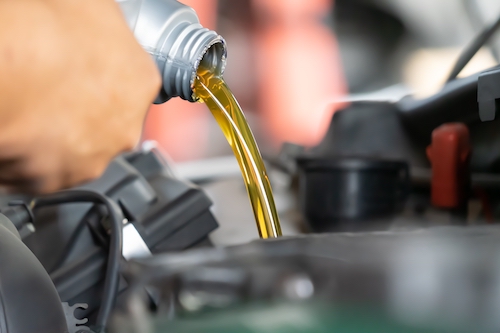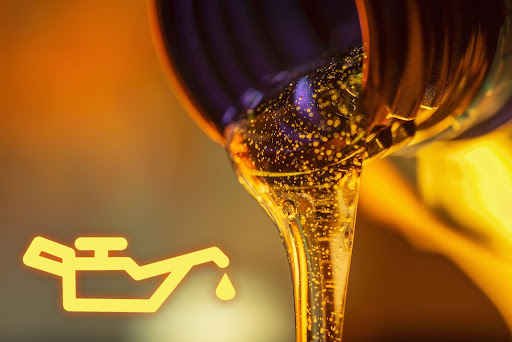The Benefits of Keeping Up with Routine Oil Change Service in Euless
Other than knowing that they need to be done occasionally, chances are you haven't given much thought to oil changes. However, having more profound knowledge of this essential service can help you take better care of your vehicle and make you more eager to do so.
Regular oil change services in Euless are essential for running your car smoothly and efficiently. The following explains why this is so:
It Keeps the Engine Components Clean
The engine should be the top priority when it comes to keeping your vehicle's contents clean; this is exactly what clean oil does. As the oil passes through the engine, it collects dirt and grime that accumulates inside the engine over time. Thus, keeping the engine free of contaminants. However, the oil's capacity is limited, and if it isn't changed routinely, the gunk can clog the oil filter and cause costly engine damage.
It is important to note that it is not good to keep topping off existing oil when it is running low. Diluted oil isn't able to keep an engine sufficiently clean and protected.
It Reduces Friction and Excessive Engine Wear
The last thing that should be happening in your vehicle is to have metal parts rubbing against each other. When the oil gets too old, and the filter is too clogged, that's what can happen. Clean oil works to lubricate sensitive engine components. However, excessively dirty oil cannot effectively perform this task, and these parts eventually start to wear together, leading to the engine possibly seizing up. If this happens, you will not be able to drive your vehicle, and it will need to be towed to your closest auto shop for extensive repair.
It Absorbs Excessive Heat
Various metal parts move inside your engine while it's running, generating a lot of heat. Clean oil absorbs excessive heat, preventing your engine from overheating. However, old, dirty oil loses its ability to absorb heat sufficiently. Conversely, it can start reflecting heat, causing a larger issue within the engine.
It Helps Maximize Fuel Efficiency
When your engine has clean oil, it can run much more smoothly without added friction and heat, which leads to increased fuel efficiency. Using dirty oil and an old filter causes the engine to work harder, significantly reducing gas mileage.
It Prevents Rust and Corrosion Inside the Engine
Rust and corrosion are two of the most damaging things to the metal components within your engine. Clean motor oil keeps both of these things from building up. Consequently, regular oil change services in North Richland Hills and Euless can ensure the continuity of this important job.
It Helps in Catching Other Engine Issues
Another significant advantage of a professional oil change service is that it creates the opportunity for your mechanic to look for other issues that may be present in your vehicle. Acting quickly on minor issues can help you avoid costly repairs in the future, saving you money.
How Often Should You Bring Your Vehicle for an Oil Change?
In addition to the benefits of routine oil change services, it is important to understand the importance of changing your oil at the correct intervals. An engine not serviced on the specific recommended schedule can suffer from decreased performance, increased emissions, and potential breakdowns.
Your owner's manual is the best place to look to determine how often your vehicle needs an oil change. Many newer vehicles come with an oil life monitor that can help determine when an oil change is necessary. Usually, when it is time for service, the oil light or service light illuminates on the dashboard.
However, the following are some general guidelines for determining how often an oil change should be done:
- Conventional oil should be changed roughly every 3,000 miles
- Full-synthetic oil should be changed every 5,000 to 7,500 miles
- Synthetic blend oil needs to be changed roughly every 5,000 miles
- Older vehicles with higher mileage will require more frequent oil change services
- Vehicles frequently carrying/towing heavy loads or often driving in stop-and-go traffic should have the oil change service more often
- Vehicle engines that start to burn oil and/or generate smoke should have the oil change service more often
The ASE-certified mechanics at Parra Car Care can help you determine your engine's best oil change schedule.
What Does a Professional Oil Change Service Involve
Changing your vehicle's oil yourself can be tempting. Though it looks like a simple DIY task, it is more intricate than one might anticipate, and it is preferable to leave it in the hands of professionals. During an oil change at a professional auto service shop, the technician will do the following:
- Lift the vehicle and drain all of the old, dirty oil
- Replace the old oil filter with a new, clean filter
- Refill the engine with new, high-quality, clean oil
- Inspect the engine's air filter and the in-cabin filter
- Lubricate high-wear areas, like the chassis, hood, and door hinges
- Inspect the vehicle's other system fluids, including the transmission, brake, and power steering fluid
- Top off the coolant and windshield washer fluid as needed
- Check the belts, hoses, tire pressure, battery, lights, and wiper blades
As you can see, quite a few things happen during an oil change to help keep your vehicle running safely and reliably.
Different Types of Engine Oils
Engine oils are available in a wide selection of varieties to meet the needs of all types of vehicles, driving habits, and mileage.
First, it is essential to consider two key elements relevant to all oil types: viscosity and weight.
- Viscosity is a measure of the fluidity of oil. The oil's viscosity increases with its thickness, which causes it to flow more slowly at low temperatures. Conversely, low viscosity indicates that the oil is thin and flows more quickly. The viscosity rating is given to all motor oils by the Society for Automotive Engineers (SAE). You will generally see the viscosity level of the oil indicated on the container.
- The weight is another measure of the oil's viscosity and is also given by the SAE. This number is allocated to the oil based on how well it flows at 210°F, which is roughly the operating temperature of most engines.
A brief description of the various types of oil is provided in the following sections.
Conventional
Conventional oil is sometimes referred to as "standard" or "regular". This oil comes from crude mineral oil and is only partially refined, making it cheaper than other oil types. Conventional oil can provide sufficient protection for most engines, but it gets dirty more quickly. This is why this oil requires more frequent oil change services. However, when changed routinely, this oil can help your engine reach 150,000 miles or more.
Full Synthetic
As the name implies, full-synthetic oil is entirely manufactured in a factory or lab and is highly refined. Compared to conventional oil, this oil breaks down more slowly and can better withstand high temperatures. It is more expensive than other oil types but provides engines with the highest performance and protection. For modern vehicles, most manufacturers recommend using full-synthetic oil.
Synthetic Blend
Synthetic blend oil combines the best aspects of conventional and full-synthetic oils. The lower price of synthetic blend oil is beneficial for drivers who cannot afford full-synthetic oil.
About 45% of all vehicles use either a synthetic blend or a full synthetic oil. When deciding which option is best suited for your vehicle, two factors should be taken into account.
- Due to its better chemical stability, performance at high and low temperatures, and overall viscosity, full-synthetic oil helps further extend your engine's lifespan more than synthetic blend. Additionally, full-synthetic oil resists thermal breakdown, oxidation, and oil sludge buildup more effectively.
- Synthetic blend oil contains some mineral oil, and its performance depends on how much mineral oil is present in it. The higher the amount, the lower the performance and the shorter the oil's longevity. However, compared to full-synthetic oil, synthetic blend oil is cheaper and only needs to be changed slightly more frequently.
High-Mileage
An older engine that has run over 75,000 miles needs extra protection. High-mileage oil was designed to tackle this problem. These oil attack problems, such as faster oil burn-off, engine corrosion, and leaking gaskets, can spread like plagues in older cars. High-mileage oil offers superior protection with viscosity modifiers, specialized cleaners, anti-corrosion agents, and seal conditioners.
Diesel
Diesel engines, which are larger than gasoline engines, absorb more dirt and grime. So they need an oil that can adequately keep them clean and protected. Diesel motor oil has powerful additives that help in achieving this. A diesel engine requires more frequent oil changes due to the large quantity of dirt and debris that it collects.
When it comes to determining which oil should be used in an engine, there is no one-size-fits-all answer. The best choice is to use what your vehicle's manufacturer recommends. The manufacturer often recommends a range of oils to choose from to account for different environments and driving habits. Additionally, it is OK to switch between synthetic and conventional oils—doing so does not damage your engine.
Different Types of Oil Filters
Your oil filter also plays a crucial role in helping to keep your engine clean and protected. However, a worn-out or excessively dirty filter cannot do its job properly, hindering filtration as well as the flow of the oil. Either way, it causes your vehicle's engine to suffer.
A brief description of the various types of oil filters is provided in the following sections.
Full-Flow Filter
Also referred to as the primary oil filter, a full-flow filter is the most commonly used oil filter. This filter cleans all the oil that flows through the engine (some filters don't). Since a full-flow filter allows the oil to move freely through the engine, no matter how cold the outside temperature is, it works well in colder climates.
Cartridge Filter
A cartridge filter has the same design as a full-flow filter and is made from recyclable material.
Spin-on Filter
A spin-on filter is another type of full-flow oil filter with a paper element paired with a steel canister. These filters are extremely easy to use and require minimal tools to install.
Secondary Flow Filter
Just as the name implies, a secondary filter serves as a backup to the primary full-flow filters, removing any contaminants that the primary filter misses.
Spinner Filter
A spinner filter is a type of secondary filter that uses centrifugal force to trap harmful contaminants. Some of these filters generate forces over 2,000 times greater than gravity. Spinner filters are extremely effective, trapping even the smallest contaminants using centrifugal force. However, they are more expensive than other filters.
Magnetic Filter
Another type of secondary filter, the magnetic filter, uses magnetic force to remove metallic debris from engine oil. However, this filter does not do a great job of removing grime and dirt. Unlike other filters, this one doesn't need to be replaced and only requires cleaning periodically.
Red Flags Indicating That It May Be Time for an Oil Change
There are several warning signs to be aware of that indicate it's probably time for an oil change. These include:
- Illuminated "Check Engine" light
- Darker-than-normal oil, especially if it is black
- Unusual or loud noises
- Reduced engine performance
- Low oil-level reading on the dipstick
- Metal flecks present on the dipstick
If you're experiencing any of the above signs, bring your vehicle to your closest Parra Car Care location for an inspection and high-quality oil change service.
How to Properly Check Your Engine's Oil
Knowing how to properly check your engine's oil is extremely beneficial in keeping your engine running optimally between your routine oil change appointments. Here's a quick guide on how to do it:
- Park your vehicle on level ground and turn the ignition off.
- Lift the hood and find the oil dipstick—It usually has a yellow or orange-ringed handle and is marked with an oil-can symbol.
- Pull the dipstick out and wipe any oil with a clean paper towel or rag.
- Fully reinsert the dipstick into the tube.
- Slowly pull it back out and check the oil level compared to the markings on the dipstick. Typically, there are two lines visible or the words "low," "add," or "safe" are displayed.
- If the dipstick indicates a low oil level, add a quart of the recommended oil and bring your vehicle to the shop as soon as possible. Low oil levels are not something you can ignore; doing so can lead to extensive and costly engine damage.
Check your vehicle manufacturer's manual for more information on checking the oil specifically in your vehicle.
Keep Your Engine Running Its Best with Routine Oil Change Service
Oil changes are a vital part of regular car maintenance. They can help keep your engine running smoothly, reduce emissions, and prevent costly repairs. Not having this service done can lead to overheating, worn engine components, and even a seized engine.
It is important to understand the benefits of routine oil change service, how often an oil change should be done, and what to look for that can indicate it may be time for an oil change. With this information, you'll be better equipped to ensure your vehicle runs optimally.
Our ASE-certified mechanics at Parra Car Care can help keep your engine properly protected and in optimal condition. We strive to provide top-quality, professional auto care services and oil changes at fair and competitive prices. Make sure to check our Specials page for the latest oil change deals and other special offers to help make your service even more affordable!
Here at Parra Car Care, our expert service staff is ready to take care of all of your auto service needs, from routine preventative maintenance to in-depth engine repair and everything in between.
Oil Change FAQs
Which car oil lasts the longest?
Full synthetic oil is the longest-lasting motor oil variety by far. When you use this oil type in your vehicle, you can wait much longer between one oil change and the next than you could with conventional oil.
Full synthetic oil, however, costs more than conventional oil upfront. If you want to strike a balance between oil change frequency and price, consider synthetic blend oil (a mixture of these two oil types).
What happens if you don't change your oil?
To say motor oil plays a vital role in your vehicle would be an understatement. Oil is the “lifeblood” of your car, and it's responsible for:
- Keeping your engine clean: Fresh motor oil can trap dirt and other contaminants, preventing them from affecting your engine.
- Lubricating moving engine parts: If you didn't have motor oil, the moving parts in your engine would make direct contact with each other.
- Controlling engine heat: Your engine creates heat while it operates, and motor oil prevents it from overheating.
- Preventing rust formation: Motor oil can also keep rust from building up in your engine.
That said, local drivers must understand that oil has a limited life span. When your oil gets dirty and starts to break down, it loses effectiveness. Eventually, this fluid will be completely unable to function.
If you don't get an oil change in Euless, TX, at this point, you'll face severe consequences. The issues associated with neglecting oil changes range from reduced gas mileage to overheating engines and blown engine gaskets. To avoid these problems, visit a local auto shop for regular oil change service.
How long does an oil change take?
When you choose a qualified shop for your next Euless oil change, this service should take no more than 20-45 minutes. The biggest reason why is that shops like Parra Car Care employ ASE-certified mechanics. Since these people know everything there is to know about automotive service, they can complete oil changes as quickly as possible.
The average driver in Euless doesn't have this level of auto maintenance knowledge and experience. Though the thought of doing a DIY oil change may be tempting, understand that this process will take you much longer than you might think. Instead, schedule an oil change at Parra Car Care to save time (and money, thanks to our selection of coupons)!
Will my car run better after an oil change?
Though oil changes are a crucial auto maintenance service, that doesn't necessarily mean you'll see a dramatic difference in your car's performance after one of these appointments. Compared to major repair work, oil changes provide more subtle — but equally important — benefits to your vehicle.
You may still notice some oil change-related performance benefits. You'll probably get better gas mileage and might benefit from improved acceleration as a result of an oil change.




